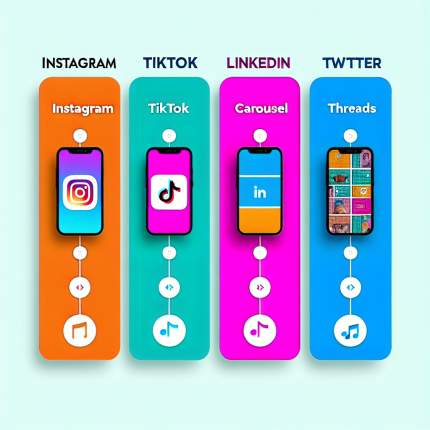How to Properly Cover Your Assets (CYA) When Using Viral Content: A Comprehensive Guide
How to Properly Cover Your Assets (CYA) When Using Viral Content: A Comprehensive Guide
In the fast-paced world of digital marketing, leveraging viral content can be a game-changer for your brand. However, it’s crucial to know how to protect yourself legally while doing so. CYA, or "Cover Your Assets," is not just a catchy phrase—it’s a necessity when dealing with online intellectual property. This guide will walk you through the steps to ensure you’re using viral content responsibly and legally, while still reaping its benefits.
Why Covering Your Assets Matters in the Digital Age
When it comes to online intellectual property, it’s alarmingly easy to find yourself in legal hot water. Even if you’re sharing someone else’s work without malicious intent, the consequences can be severe. While it might seem unlikely that someone would take you to court over a minor infringement, the risk is still there.
For instance, the original creator might be located halfway across the world—say, in Florida—while you’re in Shanghai, China. Filing a lawsuit across such distances can be complicated and expensive, especially if the claimed damages are minimal. However, this doesn’t mean you’re in the clear. Legal issues can still arise, and it’s better to be safe than sorry.
The Appeal of Viral Content: Why You Should Use It
The primary reason for using viral content is its proven ability to attract attention. This type of content has already demonstrated its power to pull in eyeballs and generate shares. When people see it, they can’t help but pass it along. By piggybacking your brand on such content, you increase the likelihood of driving traffic to your website.
The more people see the content, the more they see your brand, and the higher the chance someone will click through to your site. If enough people visit, you could potentially make a significant amount of money. To maximize your results, focus on niche-specific content that resonates with your target audience.
How to Properly Cover Your Assets When Using Viral Content
So, how do you ensure you’re covering your assets while using viral content? Here are some essential steps to follow:
1. Always Include CTTO (Credit to the Owner)
One of the simplest yet most effective ways to protect yourself is by including CTTO, which stands for "Credit to the Owner." This small act declares to the world that you are not the original creator and are not claiming ownership. It helps to set the record straight and can prevent legal confusion or issues down the line.
2. Link to the Original Source
When sharing content, always link back to the original source. For example, if you’ve downloaded a video from YouTube and are sharing it on Facebook, make sure to include a link to the creator’s channel. This not only gives credit where it’s due but also creates a win-win situation. The original creator gets additional traffic, and you get to leverage their content’s popularity.
3. Add Your Own Commentary
Adding your own commentary to the content you’re sharing can provide an extra layer of legal protection. For instance, if you’re sharing a video, include a 50-word commentary discussing why the video is important or any controversies it might address. This seemingly simple act can go a long way in protecting you from legal hassles.
Copyright law is designed to protect people from having their intellectual property stolen. When you share videos, infographics, graphics, or written content, you’re technically infringing on the creator’s copyright. By adding your own commentary, you’re transforming the content into something new, which can help shield you from legal repercussions.
4. Avoid Sharing Complete Third-Party Content
It’s generally a bad idea to share third-party content in its complete form. For example, if Warner Bros. releases a blockbuster movie, you can’t simply post a link to the full movie on your Facebook account. Doing so would be considered piracy, and you could face serious legal consequences.
Instead, consider sharing a small snippet of the content. For instance, a 10-second clip from a movie can be used to draw attention and make a point without infringing on copyright laws. Whether your point is political, artistic, or technical, this approach keeps you out of criminal territory.
The Legal Implications of Not Covering Your Assets
Failing to cover your assets when using viral content can lead to significant legal issues. Under international intellectual property law, only the creator of the content and those they’ve assigned rights to have the authority to copy or distribute it. Violating these rights can result in hefty settlements and substantial financial losses.
While it might seem impractical for small cases to go to court, it’s not impossible. Therefore, taking the extra steps to protect yourself is not just advisable—it’s essential.
Best Practices for Using Viral Content Responsibly
To sum up, here are some best practices for using viral content responsibly:
- Always Credit the Original Creator: Use CTTO and link back to the source.
- Add Value Through Commentary: Provide your own insights or analysis to transform the content.
- Avoid Sharing Complete Works: Use snippets or excerpts rather than full pieces.
- Stay Informed About Copyright Laws: Understanding the legal landscape can help you navigate potential pitfalls.
By following these guidelines, you can leverage the power of viral content while minimizing legal risks. Remember, the goal is to create a win-win situation where both you and the original creator benefit.
Conclusion: Balancing Risk and Reward
Using viral content can be a highly effective strategy for boosting your brand’s visibility and driving traffic to your website. However, it’s crucial to balance the potential rewards with the inherent risks. By taking the necessary steps to cover your assets, you can enjoy the benefits of viral content without falling foul of the law.
In the digital age, where content is king, knowing how to use it responsibly is paramount. So, the next time you come across a piece of viral content that’s perfect for your brand, remember to CYA—Cover Your Assets. It’s a small effort that can save you from big headaches down the line.










